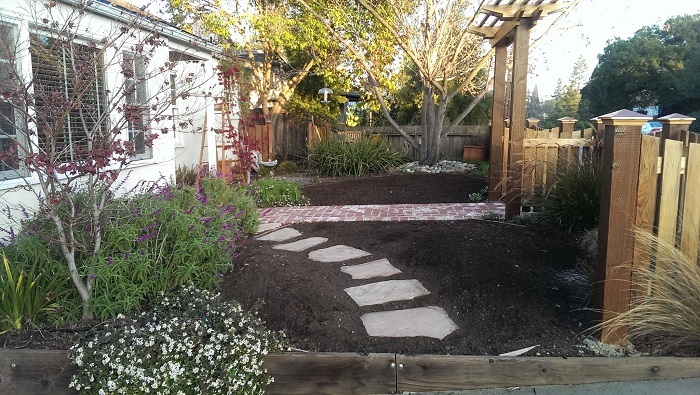
There are several advantages to creating an appealing yard, where people can securely and readily enjoy the outdoors and appreciate their natural surroundings. Personalized landscaping allows individuals to engage with nature in meaningful ways, from producing fresh veggies to bonding with loved ones in a comfortable and peaceful atmosphere.
On the other hand, our yards have considerably more potential than what they immediately provide us as owners. Our yards can help reduce drought, climate change, food deserts, and colony collapse by strategically and sustainably landscaping them to serve better the ecosystems and communities on which we rely.
When we turn to nature, we realize that the creative design, inclusive interdependence, and unshakable resilience that characterize natural habitats offer all of the answers to the problems that plague our societies today.
Turning to our ecosystems for blueprints is critical for everything from building safe water cycle systems to generating nutritious food. This idea of looking to nature for answers to existing issues is known as "biomimicry," and it is the theory underlying the redesign of the Japanese bullet train, which was built to mimic the aerodynamic form of a kingfisher's beak.
This raises the question of how we might better emulate and appreciate nature's creativity by reproducing the benefits that our dynamic ecosystems offer us daily. Here are some simple methods to model your yard after natural processes while increasing the value of your yard to you and the world!
Building a sustainable environment needs forethought and intention, as well as site-specific direction. The goal is to choose native plant species to beautify your yard. By selecting native plants to surround your home, you not only guarantee that your garden is more robust, but you also help local animals and potentially endangered species.
In addition to native plant species, climate-adapted plants give the benefit of resilience and are an excellent choice for yard owners concerned with sustainability.
Furthermore, thoughtful landscaping and tree arrangement may give a variety of fantastic benefits, including natural insulation of the property. A well-planned landscape design may save an unshaded home's air conditioning expenditures by up to 50%, and tree-shaded communities have considerably lower daytime temperatures than their unshaded, treeless equivalents in the summer!
Balanced ecosystems automatically cycle food, trash, and nutrients, reflecting the goal we call "zero-waste." Yards provide us with the incredible potential to grow our food and adopt environmentally friendly food waste management practices.
Cultivating a personal garden does not have to be complicated; in fact, numerous inexpensive and easy gardening equipment are available to assist new gardeners in getting started. Vertical farming components are an efficient and compact technique to grow crops in tiny yards.
Lettuce Grow's Farmstand can help grow up to 36 crops at once and can be used outdoors and inside, making it especially useful for individuals living in challenging winter climates.
Another fantastic garden accessory is Subpod's in-garden composting system, which streamlines the composting process and makes it even simpler for gardeners to recycle their food waste into beneficial fertilizer.
Just as forests naturally collect, manage, and filter rainfall, your yard can cleanse, divert, and recycle rainwater for use with proper design. Rainwater capture and redirection, for example, can minimize floods, soil erosion, and runoff pollution while saving clean water and lowering your water cost.
You can guarantee that rainfall returns to the earth and nourishes the soil, eventually replenishing groundwater by using permeable surfaces throughout the landscaping process.
Rain buckets, downspouts, and even rain chains can aid with this process in your backyard. Furthermore, landscaping options such as establishing rain gardens can help with helpful rainfall redirection on your property.
Furthermore, yards allow us to mimic the complex energy and carbon capture mechanisms in any particular natural system. Choose renewable energy-driven goods for accessories and fixtures that you choose to place in your yards, such as essential solar powered string lights or lampposts, to mimic energy harvesting.
Another activity that your yard may help with on a modest scale is carbon sequestration. While installing artificial "Supertrees" that sequester carbon dioxide, such as the stunning structures in Singapore's national park Gardens by the Bay, is not a practical option for your yard, increasing the volume of vegetation, preserving existing trees on your property, and planting native or climate-adapted tree species are all great ways to help in carbon capture and co-capture.
 Call Now
Call Now